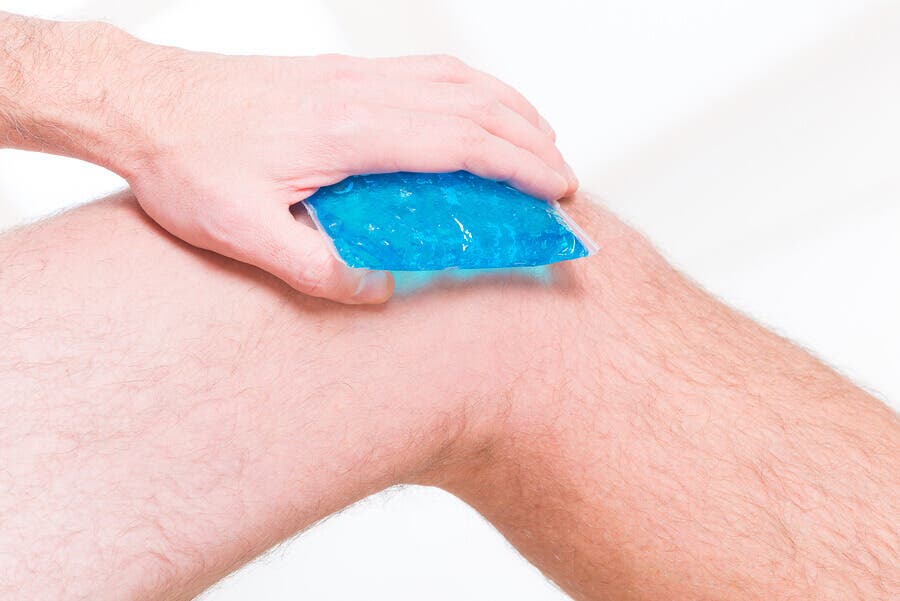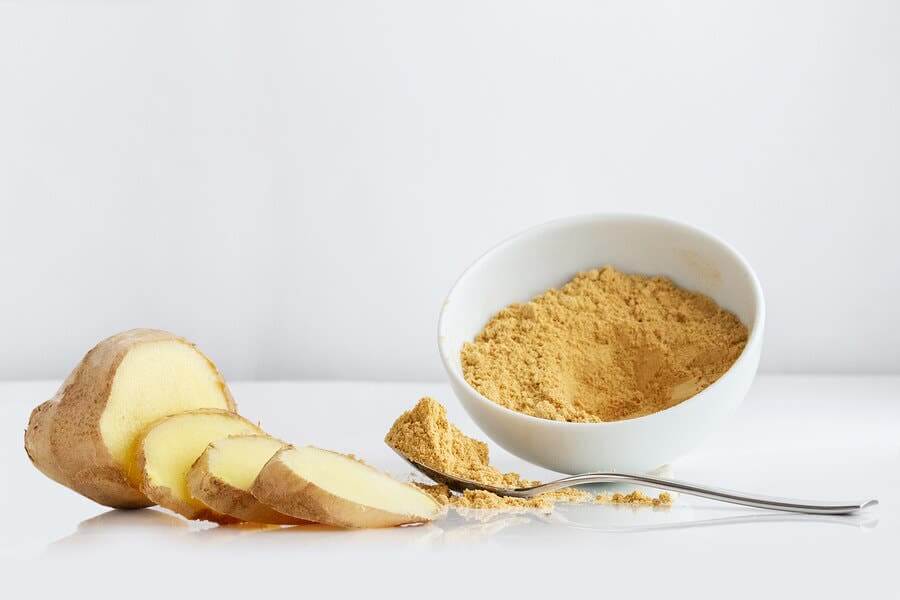Home Remedies to Treat Runner's Knee


Written and verified by the doctor Leonardo Biolatto
Runner’s knee or patellofemoral pain syndrome is pain that can appear as a consequence of injury, muscle weakness, overload, or trauma. Its name comes from a common issue with athletes that do lots of running and jumping.
The most common symptom is mild pain in the front of the knee. Also, it increases when running, going up and down stairs, or sitting for long periods. It might also get worse when kneeling or squatting.
Although it might be a mild problem, it’s best to go to the doctor or physical therapist to get an accurate diagnosis. Then, the professional can determine if a rehab program, medication, or surgery is necessary.
Now, there are also some home remedies that can help relieve pain temporarily. However, keep in mind that they aren’t a first-line option, and you should only use them for minor cases. What are some home remedies to treat runner’s knee? We’ll tell you more below.
Home remedies for runner’s knee
According to information in Open Access Journal of Sports Medicine, each case of runner’s knee is different, as there are lots of different causes. Because of this, you should talk to your doctor before trying any home remedy.
We can determine the source of the pain with a physical exam, X-rays, CT scans or an MRI scan. Once you know the cause, your doctor might recommend rest, physical therapy sessions, pain relievers, braces, or even surgery if there aren’t non-surgical options.
Now that this is clear, let’s see what home remedies you could try if you have runner’s knee. Like medical treatment, you should accompany them with rest, or avoid activities that require excessive effort.
You might like: 10 Tricks to Reduce Knee Pain Through Your Diet
Ice packs

One of the first steps to ease the pain from runner’s knee is to try to reduce inflammation. Applying something cold can be useful. You can wrap ice cubes in a cloth, or apply an ice pack.
As suggested by a systematic review in Physical Therapy in Sport, cold therapy has a positive effect in decreasing knee swelling. However, more evidence is required to see how it helps runner’s knee specifically.
Therefore, you shouldn’t use this as your only treatment option. You should use it with caution, since research shows it could cause problems if you do it incorrectly. For example, you could burn your skin or harm your nerves if you leave ice on for too long.
Because of this, whenever you apply an ice pack, make sure to wrap it in a cloth or a special bag. Additionally, only use it for short periods of time. If you have a bad reaction, stop using it immediately.
Ginger root
In traditional medicine, ginger root has been used to treat different problems. In fact, current literature can support a lot of its properties.
A review published in The Journal of Strength and Conditioning Research suggests that its anti-inflammatory and pain-relieving properties are useful in calming athletes’ pain. In fact, its effects are similar to non-steroidal anti-inflammatory drugs (NSAIDs), but without side effects.
You can get these properties through its natural extracts. You can use them topically in ointments, or by drinking ginger tea. To do this, add a tablespoon of ground ginger to a cup of hot water.
Note: Recent studies show that consuming ginger rarely causes side effects. However, consuming it too much can cause stomach pain.

Turmeric
Spices like turmeric can also help treat runner’s knee. Although it’s not a first-line treatment, taking it as a supplement can help fight pain and inflammation.
A study in the European Journal of Applied Physiology found that curcumin, the main active compound in turmeric, reduces the presence of inflammatory chemicals called cytokines. Thanks to this, it could help relieve muscle pain after an intense exercise.
Also, the medical journal Drug Design, Development and Therapy reported that curcumin has anti-inflammatory activity that helps calm joint pain. Thus, it can improve physical function and quality of life.
You can add turmeric in small amounts in soups, smoothies and other recipes. In addition, you can buy it in capsules. To take it, we recommend talking to your doctor, especially if you’re pregnant or sick. Although it’s considered safe to take, it might not be best for some people.
What else can I do to relieve runner’s knee?
Besides the remedies we mentioned, and talking to your doctor, there are other ways you can treat runner’s knee. This includes following a balanced diet, and limiting how many inflammatory products you eat- sausages, red meats, processed foods, etc. On the other hand, stay hydrated and avoid bad habits like smoking and drinking alcohol.
Although, at first, it’s good to rest, later on, you should start practicing moderate physical activity. To do it safely, it’s best to consult a physical therapist and follow their recommendations. If there are signs of problems, see a doctor as soon as possible.
All cited sources were thoroughly reviewed by our team to ensure their quality, reliability, currency, and validity. The bibliography of this article was considered reliable and of academic or scientific accuracy.
- Halabchi F, Abolhasani M, Mirshahi M, Alizadeh Z. Patellofemoral pain in athletes: clinical perspectives. Open Access J Sports Med. 2017;8:189–203. Published 2017 Oct 9. doi:10.2147/OAJSM.S127359
- Martimbianco, A. L. C., Gomes da Silva, B. N., de Carvalho, A. P. V., Silva, V., Torloni, M. R., & Peccin, M. S. (2014, November 1). Effectiveness and safety of cryotherapy after arthroscopic anterior cruciate ligament reconstruction. A systematic review of the literature. Physical Therapy in Sport. Churchill Livingstone. https://doi.org/10.1016/j.ptsp.2014.02.008
- Markert, Summer. (2011). The Use of Cryotherapy After a Total Knee Replacement. Orthopaedic nursing / National Association of Orthopaedic Nurses. 30. 29-36. 10.1097/NOR.0b013e318205749a.
- Wilson, P. B. (2015, October 1). Ginger (Zingiber officinale) as an analgesic and ergogenic aid in sport: A systemic review. Journal of Strength and Conditioning Research. NSCA National Strength and Conditioning Association. https://doi.org/10.1519/JSC.0000000000001098
- Nikkhah Bodagh M, Maleki I, Hekmatdoost A. Ginger in gastrointestinal disorders: A systematic review of clinical trials. Food Sci Nutr. 2018;7(1):96–108. Published 2018 Nov 5. doi:10.1002/fsn3.807
- Nicol, L. M., Rowlands, D. S., Fazakerly, R., & Kellett, J. (2015). Curcumin supplementation likely attenuates delayed onset muscle soreness (DOMS). European Journal of Applied Physiology, 115(8), 1769–1777. https://doi.org/10.1007/s00421-015-3152-6
- Chin, K. Y. (2016, September 20). The spice for joint inflammation: Anti-inflammatory role of curcumin in treating osteoarthritis. Drug Design, Development and Therapy. Dove Medical Press Ltd. https://doi.org/10.2147/DDDT.S117432
This text is provided for informational purposes only and does not replace consultation with a professional. If in doubt, consult your specialist.








